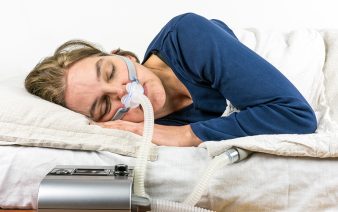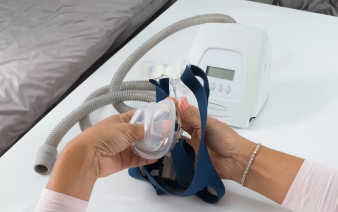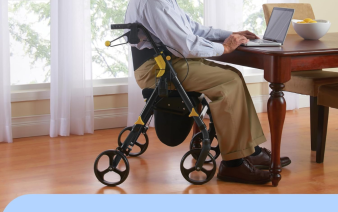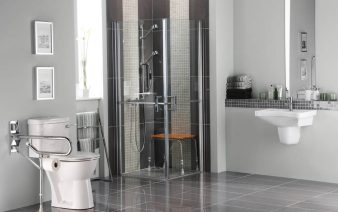-
By: admin
-
May 19, 2025
The Importance of Medical Equipment Insurance: Why Every Healthcare Provider Should Consider It
Introduction:
In the healthcare industry, medical equipment is vital to delivering quality care and improving patient outcomes. Whether it’s diagnostic machines, patient monitors, or life-saving devices, medical equipment plays a crucial role in every healthcare facility. However, this equipment comes with significant costs, and like any asset, it is susceptible to damage, theft, or wear over time.
This is where medical equipment insurance becomes essential. Insurance for medical equipment can protect healthcare providers from unexpected expenses related to repair or replacement, ensuring that critical devices are always functioning properly. In this blog post, we’ll explore why medical equipment insurance is crucial for healthcare providers and how it helps maintain the continuity of care while protecting your bottom line.
1. Protecting High-Cost Equipment
Medical equipment, especially advanced diagnostic and surgical tools, represents a large financial investment for healthcare providers. These devices are often specialized and can be extremely expensive, with some costing tens or even hundreds of thousands of dollars.
Without insurance, the cost of repairing or replacing a damaged or malfunctioning device can have a major impact on your budget. Medical equipment insurance provides coverage to mitigate these costs, ensuring that the equipment can be repaired or replaced quickly without disrupting patient care or draining financial resources.
2. Minimizing Downtime and Continuity of Care
The availability of fully operational medical equipment is critical for patient care. A malfunction or breakdown in any medical device, such as an MRI machine, defibrillator, or ventilator, can cause significant delays in treatment, affecting patient outcomes and overall workflow. In some cases, prolonged downtime may even lead to compromised care.
With medical equipment insurance, healthcare providers can ensure that damaged equipment is either repaired or replaced promptly, minimizing any potential disruptions in patient services. This helps maintain the continuity of care and ensures that your facility can continue to serve patients without interruption.
3. Liability Protection Against Equipment Failure
In healthcare, even the slightest equipment failure can result in serious consequences, including patient injury or even death. For example, a malfunctioning ventilator or patient monitor could cause life-threatening complications. When equipment failures lead to accidents, healthcare providers may face legal action and liability claims.
Medical equipment insurance often includes liability coverage, which helps protect healthcare providers from financial losses due to equipment failures that result in harm to patients. This coverage ensures that your practice, hospital, or clinic is protected from costly legal fees, settlements, and damage to your reputation.
4. Managing Repair and Maintenance Costs
Routine repairs and maintenance are an integral part of keeping medical equipment in optimal working condition. However, as equipment ages, repair costs can become more frequent and expensive. Without proper insurance, these repair costs may be difficult to manage, especially for high-tech equipment.
Medical equipment insurance often includes repair coverage, which means you don’t have to cover the full cost of repairs yourself. Additionally, many insurance policies also cover routine maintenance to ensure that your equipment remains in good condition, preventing breakdowns and costly repairs down the line.
5. Coverage for Equipment Theft or Loss
Medical equipment is often moved between departments, clinics, and even off-site facilities. This makes it vulnerable to theft or loss. Devices like portable ultrasound machines, infusion pumps, and diagnostic tools are especially at risk, as they can easily be misplaced or stolen.
With medical equipment insurance, healthcare providers can protect themselves against the financial impact of stolen or lost equipment. Many policies also cover theft or damage during transportation, ensuring that even if equipment is lost outside the facility, you’re still protected.
6. Enhancing Financial Stability and Budget Planning
Healthcare providers often operate with tight budgets, and unforeseen costs related to equipment failure or repairs can strain finances. Medical equipment insurance allows healthcare businesses to predict and manage these costs more effectively by spreading the risk over time.
By paying a predictable premium for insurance coverage, healthcare providers can avoid unexpected financial burdens and ensure that their financial stability is maintained, even in the face of major equipment failures or damage.
7. Regulatory and Accreditation Requirements
For healthcare providers, maintaining equipment and ensuring its proper functioning is not just an operational necessity—it’s often a regulatory requirement. Medical equipment must meet specific safety standards set by various health organizations, including the FDA and Joint Commission. In some cases, these organizations may require proof of insurance to ensure that providers are equipped to handle equipment failure without jeopardizing patient care.
Having medical equipment insurance ensures compliance with regulatory standards and demonstrates that your organization takes patient safety and equipment management seriously.
8. Customizing Coverage for Your Facility’s Needs
Every healthcare facility has unique equipment needs, whether it’s a small outpatient clinic, a large hospital, or a specialized practice. Fortunately, medical equipment insurance can be tailored to fit these specific needs. You can choose from different coverage options, including:
-
Replacement cost: Covers the cost of replacing equipment with similar new items.
-
Repair cost: Covers the costs to fix damaged equipment.
-
Loss of income: Protects against financial loss due to equipment downtime.
Customizing your insurance policy ensures that your equipment is covered based on its use, importance, and value in your facility, giving you the best possible protection.
9. Choosing the Right Insurance Provider
Not all insurance providers offer the same coverage, so it’s important to choose one that understands the unique challenges healthcare providers face. When selecting an insurance provider for medical equipment, look for a company that:
-
Specializes in healthcare and medical equipment coverage.
-
Provides fast response times for claims, especially in emergencies.
-
Offers tailored policies for different types of equipment and needs.
-
Is transparent about terms, exclusions, and premiums.
Consult with an experienced insurance agent who can help you understand your options and find the best policy for your practice or facility.
Conclusion:
Medical equipment is a critical investment for healthcare providers, and ensuring it’s protected with medical equipment insurance is key to maintaining uninterrupted care and financial stability. By covering the risks associated with equipment failure, theft, and costly repairs, insurance helps healthcare providers safeguard their assets, protect patients, and stay compliant with industry regulations.
No matter the size of your healthcare facility, having the right insurance in place can provide peace of mind and allow you to focus on what matters most: delivering exceptional patient care. Make sure your equipment is insured, and ensure your practice or clinic is always ready to face any challenges that come your way.












Leave a comment